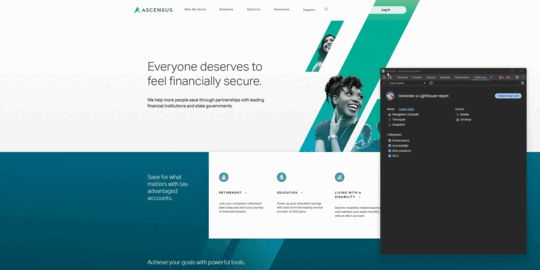DXP vs CMS: Which is right for you?

Your teams are managing complex digital environments: multiple websites, internal portals, multilingual content. Sound familiar? The pressure to deliver seamless, secure, and personalized experiences has never been higher.
You’re likely asking: Is a CMS enough or is it time for a DXP?
According to Statista, global spending on digital transformation including technologies like DXPs is expected to reach $3.9 trillion by 2027, as enterprises invest in smarter, more connected digital experiences.
In this article, you’ll learn:
- The core differences between CMS and DXP
- When a CMS is enough and when a DXP becomes essential
- How to align the right platform with your enterprise’s digital maturity and strategic goals
Let’s dive in.
What is a content management system (CMS)?
Imagine you run a blog, or a company website. You need to update content regularly adding new blog posts, tweaking product descriptions, or refreshing homepage banners. But what if you don’t know how to code? That’s where a Content Management System (CMS) comes in.
A CMS is software that lets you create, manage, and publish digital content without needing deep technical expertise. Whether you're a solo entrepreneur or part of a large enterprise, a CMS makes it easy to keep your website fresh and engaging.
How does a CMS work?
At its core, a CMS separates content from design and functionality. This means you can edit text, upload images, and organize pages without touching a single line of code. Most CMS platforms offer:
- A user-friendly dashboard for managing content
- Templates and themes to control design
- Plugins and integrations to add features (think SEO tools, analytics)
You get to focus on what matters delivering valuable content while the CMS handles the technical side.
Common use cases for a CMS
A CMS isn’t just for bloggers, it's used across industries. Some popular applications include:
- Corporate websites Companies use CMS platforms to manage service pages, press releases, and blogs.
- Intranet and employee portal: Centralize internal communications, resources and policies.
- Multilingual and multisite platforms: Maintain a consistent experience across languages, regions
- Educational platforms Universities and training institutes use CMS solutions to host courses and learning materials.
- Media and publishing News outlets and magazines rely on CMS tools to streamline content production.
What is a DXP (Digital Experience Platform)?
Think about the last time you interacted with a brand online. Maybe you visited their website, got a personalized product recommendation, received an email follow-up, or saw a relevant ad on social media. That seamless, connected experience didn’t happen by accident, it was likely powered by a Digital Experience Platform (DXP).
A DXP is an advanced content and experience management layer designed to deliver personalized, consistent, and data-driven interactions across all your digital touchpoints. While a traditional Content Management System (CMS) helps you manage and publish content, a DXP goes further by building on your CMS by integrating data, automation, and AI to optimize the entire user journey.
A DXP doesn’t replace your CMS, it enhances it. It’s the layer that transforms static content into dynamic, contextualized digital experiences.
How does a DXP work?
If a CMS is like managing one website, a DXP is like orchestrating your entire digital ecosystem. It connects all the environments where your users interact with your brand corporate websites, portals, intranets, and more.
Here’s what makes a DXP powerful:
- Omnichannel Delivery: Ensures a consistent experience whether a customer visits your website, mobile app, or interacts with your brand via email.
- Personalization & AI: Uses customer data to deliver tailored experiences based on preferences, past interactions, and behavior.
- Integration with Other Tools: Connects with CRM systems, e-commerce platforms, marketing automation tools, and analytics for a unified customer view.
- Content & Experience Management: Like a CMS, a DXP lets you manage content, but with added intelligence to customize what different users see.
CMS vs. DXP: Which should you go for?
Choosing between a Content Management System (CMS) and a Digital Experience Platform (DXP) can feel like deciding between a reliable sedan and a high-tech self-driving car. Both will get you where you need to go but the experience, capabilities, and control you have along the way will be completely different.
If you're building a simple, content-driven website, a CMS is often enough. But if your goal is to deliver personalized, seamless digital experiences across multiple channels, a DXP in addition to the CMS is the smarter choice. Let's get into it.
What do you need?
Before picking a CMS or a DXP, ask yourself:
- Do I just need to manage and publish content on a website?
A CMS is designed for exactly that handling text, images, and basic site updates without requiring technical expertise.
- Do I want to create personalized digital experiences across multiple platforms (web, mobile, email, etc.)?
A DXP goes beyond just managing content; it unifies customer data, integrates with marketing tools, and delivers tailored experiences across channels.
- How important is data-driven personalization?
A CMS primarily focuses on content, whereas a DXP leverages data to show the right content to the right user at the right time.
- Am I looking for a solution that grows with my business?
A CMS is great for static websites or blogs, but a DXP is built to scale, offering AI-powered automation, omnichannel support, and deeper analytics.
CMS vs DXP: Complementary roles in the digital experience stack
| Category | CMS (Content Management System) | DXP (Digital Experience Platform) – an evolution of the CMS |
|---|---|---|
| Core Purpose | Manage and publish content on websites | Extends CMS to deliver personalized, omnichannel digital experiences |
| User Experience | Same experience for all visitors or groups of visitors | Tailors content to each user based on data, behavior, and preferences |
| Content Management | Visual editing, page creation, media libraries | Builds on CMS workflows to deliver content intelligently across multiple channels |
| Collaboration | Multi-user content editing with version control | Adds cross-department workflows and campaign-level orchestration |
| SEO & Optimization | Basic SEO tools (meta tags, URL structure) | Advanced optimization through A/B testing, AI insights, and dynamic content adjustment |
| Data & Analytics | Page-level metrics and simple reports | Unified customer insights with advanced tracking, segmentation, and predictive analytics |
| Integration | Limited plugin support or APIs | Connects with CRM, ERP, CDP, marketing automation, analytics tools, and more |
| Personalization | Static content display | Dynamic, data-driven content experiences based on user journeys |
| Automation & AI | Generally not included | Uses AI and rules-based engines to automate personalization, recommendations, and engagement triggers |
| Typical Use Cases | Institutional websites, intranets, partner portals | Cross-channel experience orchestration, personalized campaigns, multi-audience engagement |
| Ideal For | Organizations needing reliable, efficient content management | Enterprises aiming to unify content, data, and customer experience across touchpoints |
| Relationship | Foundational platform | Add-on layer that enhances and activates the CMS’s full digital potential |
Who should choose a DXP?
A DXP is the right choice if your organization:
- Wants to create personalized customer experiences across websites, portals, and digital channels
- Needs to integrate customer data from multiple sources (CRM, analytics, marketing automation)
- Operates at global scale with multisite, multilingual, or multi-brand environments
- Seeks to optimize engagement using AI, behavioral insights, and testing tools
- Is focused on digital maturity, customer-centricity, and continuous experience improvement
Perfect for enterprises that already use a CMS and want to take it to the next level with personalization, date integration and omnichannel orchestration.
Getting Started with Jahia
Jahia provides a flexible platform that allows organizations to start with a solid Content Management System (CMS) and scale over time by adding Digital Experience Platform (DXP) capabilities as their needs evolve.
Rather than opting for a full DXP suite from day one, Jahia lets you begin with core CMS features content creation, publishing workflows, multilingual and multisite management and progressively activate advanced modules, such as jExperience, for personalization, data integration, and omnichannel orchestration.
This modular approach gives teams the ability to maintain structured content operations while expanding toward more sophisticated, experience-driven use cases at their own pace.
Key advantages:
- A step-by-step path from CMS to full DXP capabilities
- A unified approach to content and experience management
- Integration with existing tools (CRM, analytics, marketing automation, etc.)
- Support for multilingual, multisite environmentsBuilt-in compliance and governance features
CMS + DXP: Finding the Right Balance
A DXP is the natural evolution of a CMS, a future-proof solution that builds on content management foundations to deliver smarter, more personalized digital experiences.
By combining structured content workflows with advanced personalization, data analysis, and omnichannel delivery, a DXP helps improve both conversion rates and visitor engagement.
Throughout this article, we’ve seen how a CMS ensures control, consistency, and efficiency, while a DXP adds the intelligence and flexibility needed to scale and adapt.
Choosing the right platform isn’t about picking one over the other. It’s about understanding how they work together to support your digital goals, now and in the future
.jpg?t=w540)
.jpg?t=w540)
